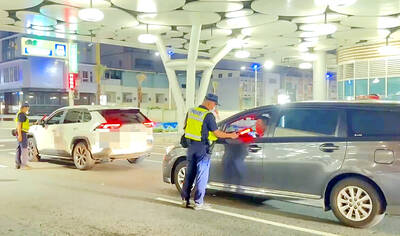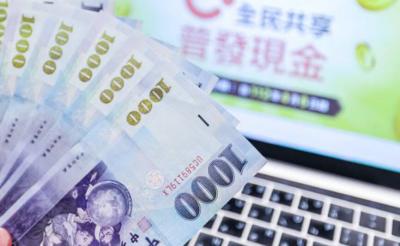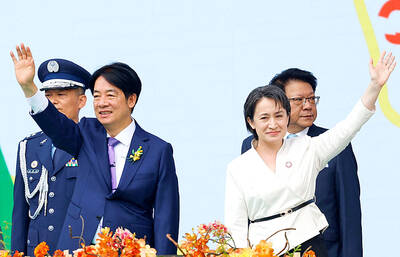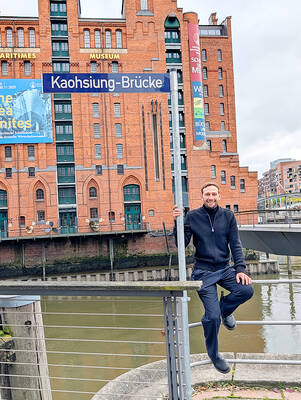Lee Rong-chang (
The men said their boss -- Chen Yi (
He never came back.
Every year on March 10, Lee's family has squid congee to commemorate the loss of their father. The family still does not know what happened to him.
They suspected his disappearance might have had something to do with his advocacy of judicial independence and call for hiring Taiwanese people in government agencies.
Sixty years have passed since the 228 Incident took place, but the whole truth behind the massacre and the events which followed during the White Terror era still remain shrouded in mystery.
228 Incident
The 228 Incident was a military crackdown on civilian protests that started on Feb. 27, 1947, against the Chinese Nationalist Party (KMT) administration.
Historians estimate that around 30,000 people were killed.
Textbooks usually portray the incident as the result of a conflict between anti-contraband officers and local people after officials attempted to confiscate cigarette products from a vendor named Lin Chiang-mai (林江邁), who did not have a sales permit from the government.
After she was injured and a bystander was killed, crowds of demonstrators demanded that the killers be punished. The protesters were met with gunfire, igniting widespread public protest the following day.
Military assistance
To resolve the conflict, Chen requested military assistance from Generalissimo Chiang Kai-shek (
Tens of thousands of people were either killed, injured or went missing within months of the crackdown, the greatest losses were reported in Keelung, Taipei, Chiayi and Kaohsiung.
While some of the facts remain unclear, former Chinese Nationalist Party (KMT) chairman Ma Ying-jeou (
The Taipei City Government released a documentary earlier this year in which the incident is interpreted as "a pure misunderstanding resulting from language barriers." The 228 Memorial Foundation published a book in February last year claiming that the KMT should be held responsible for the 1947 massacre, because its leader at the time, Chiang, as well as Chen Yi, the man he had appointed executive administrator of Taiwan, had been the masterminds behind the incident.
KMT Legislator John Chiang (
John Chiang has also said that he planned to sue President Chen Shui-bian (
White Terror
What followed the 228 massacre has been labeled the White Terror era. Numerous people were arrested and more lives were lost when martial law was declared.
Most of the victims were prominent Taiwanese, including lawyers, prosecutors, doctors, professors and media workers.
There is no official tally of the number of people who were jailed, went missing or lost their lives.
A private group dedicated to investigating the early years of the White Terror era, from 1949 to 1954, placed the number of deaths at 4,000. The group estimated 150,000 people were jailed and 120,000 went missing.
After Chiang Kai-shek's Nationalist troops lost the civil war to the Communists and withdrew to Taiwan in 1949, the KMT regime launched a nationwide campaign to "eliminate communist spies."
Suspects were either executed without proper trials or sent to Green Island for "rehabilitation."
Those who survived found it difficult to fit into society and were under constant surveillance.
They were isolated because no one dared to associate with them and they were frequently refused promotion at work because of their "tainted" background.
`Scoundrels'
Declassified documents indicate that the KMT had provided the Taiwan Garrison Command with lists of names of "scoundrels" who had to be eliminated following the 228 Incident.
It remains a mystery who provided the lists, which names were on the lists and who carried out the operation.
Efforts to study the 228 Incident did not begin until 1987, when martial law was lifted. The government did not apologize to victims' families until former president Lee Teng-hui (
Lee ordered the Cabinet to form an ad hoc foundation to offer subsidies to victims and their families.
Figures released by the foundation show that it has distributed more than NT$7.1 billion (US$215.3 million) to 9,420 victims and their families since its establishment in 1995.
As of December last year, the foundation had received 2,756 claims, 2,264 of which have been deemed valid, while 464 were turned down because of insufficient evidence.
President Chen has also apologized on behalf of the government and has announced plans to turn the ad hoc foundation into a standing body.
He also designated Feb. 28 as a national holiday, erected a national 228 monument, established a national museum, declassified documents relating to the massacre and presented national certifications to victims and their families to restore the reputations of people who had been dubbed "hooligans" during the KMT's reign.
During Chen Shui-bian's term as Taipei mayor, he established a municipal 228 museum and turned the Taipei New Park into the 228 Peace Park.
Despite the government's apologies, some relatives still cannot forgive the government, saying that surviving perpetrators behind the regime of repression remain unknown and unpunished.
Some have urged the government to amend school textbooks to reflect the facts of the incident, but many just want the truth. Kenneth Wang (
Wang's father was taken away on March 14, 1947. His family still do not know what happened to him. Kenneth Wang was only two years old and his younger brother three months when the incident took place.
His family originally did not know Lee Rong-chang, but the same fate brought the two families together. The Wangs moved in with Lee Rong-chang's family so they could take care of each other. Together, the two families and many others living in the same neighborhood who had also lost family members launched a desperate but futile search for their loved ones.
Kenneth Wang, director of the San Diego chapter of the Formosa Association for Public Affairs (FAPA), was sent to the US in 1968 by his mother, who was afraid that he would be the next target. He has been in the US ever since.
Written apology
Speaking on behalf of the victims of the 228 massacre and their families residing in the US, Wang said that they would like to see the KMT offer a sincere, written apology to them and all Taiwanese people.
They also want to know who provided the blacklists to the Garrison Command and who was in charge of the investigation office of the KMT's Taiwan chapter during the massacre.
Finally, they want to see the KMT make a contribution to the state coffers equal to the amount the 228 Memorial Foundation had paid to victims and their families.
Lee Rong-chang said he would like to see the legislature change the law regulating the "subsidies" offered to victims and their families to a "compensation" bill, because compensation would imply that someone had admitted to having made a mistake.
"Only when the perpetrators admit their mistake will victims and their families be able to forgive them and move on with their lives," he said.

TRAFFIC SAFETY RULES: A positive result in a drug test would result in a two-year license suspension for the driver and vehicle, and a fine of up to NT$180,000 The Ministry of Transportation and Communications is to authorize police to conduct roadside saliva tests by the end of the year to deter people from driving while under the influence of narcotics, it said yesterday. The ministry last month unveiled a draft of amended regulations governing traffic safety rules and penalties, which included provisions empowering police to conduct mandatory saliva tests on drivers. While currently rules authorize police to use oral fluid testing kits for signs of drug use, they do not establish penalties for noncompliance or operating procedures for officers to follow, the ministry said. The proposed changes to the regulations require

The Executive Yuan yesterday announced that registration for a one-time universal NT$10,000 cash handout to help people in Taiwan survive US tariffs and inflation would start on Nov. 5, with payouts available as early as Nov. 12. Who is eligible for the handout? Registered Taiwanese nationals are eligible, including those born in Taiwan before April 30 next year with a birth certificate. Non-registered nationals with residence permits, foreign permanent residents and foreign spouses of Taiwanese citizens with residence permits also qualify for the handouts. For people who meet the eligibility requirements, but passed away between yesterday and April 30 next year, surviving family members

Taiwanese officials are courting podcasters and influencers aligned with US President Donald Trump as they grow more worried the US leader could undermine Taiwanese interests in talks with China, people familiar with the matter said. Trump has said Taiwan would likely be on the agenda when he is expected to meet Chinese President Xi Jinping (習近平) next week in a bid to resolve persistent trade tensions. China has asked the White House to officially declare it “opposes” Taiwanese independence, Bloomberg reported last month, a concession that would mark a major diplomatic win for Beijing. President William Lai (賴清德) and his top officials

The German city of Hamburg on Oct. 14 named a bridge “Kaohsiung-Brucke” after the Taiwanese city of Kaohsiung. The footbridge, formerly known as F566, is to the east of the Speicherstadt, the world’s largest warehouse district, and connects the Dar-es-Salaam-Platz to the Brooktorpromenade near the Port of Hamburg on the Elbe River. Timo Fischer, a Free Democratic Party member of the Hamburg-Mitte District Assembly, in May last year proposed the name change with support from members of the Social Democratic Party and the Christian Democratic Union. Kaohsiung and Hamburg in 1999 inked a sister city agreement, but despite more than a quarter-century of